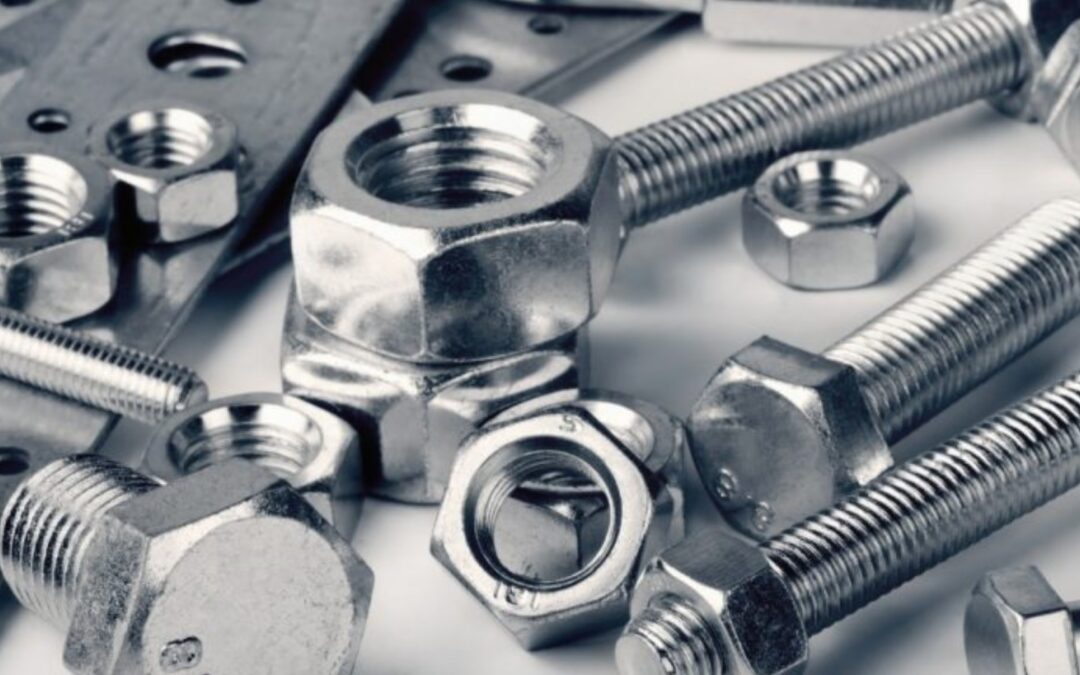Steel fasteners are essential hardware components used to securely join or affix materials together. These versatile tools encompass a range of products such as screws, bolts, nuts, washers, and anchors. Engineered from various types of steel, these fasteners serve a crucial role across industries, ensuring the stability and integrity of structures, machinery, and assemblies.
Components of Steel Fasteners
Steel fasteners consist of several components and parts that work together to securely join materials. Here are the main components and different parts of steel fasteners:
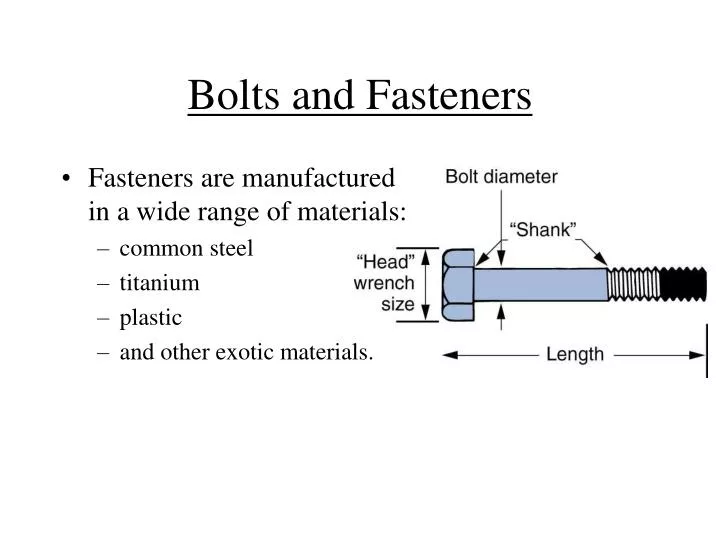
- Head: The head is the top portion of a fastener that is designed to be turned or manipulated during installation or removal. There are various head types, such as hexagonal (hex head), flat head, round head, and more. The head provides the surface for tools, like wrenches or screwdrivers, to engage and turn the fastener.
- Thread: The thread is the helical ridge that spirals around the shaft of the fastener. Threads are designed to grip into the material they are inserted into, creating a secure connection. Threads come in different sizes, pitches (the distance between threads), and profiles (V-shaped or square).
- Shaft or Body: The shaft or body of the fastener is the elongated portion that extends between the head and the point. It is the part that goes through or into the materials being joined.
- Point or Tip: The point or tip is the end of the fastener that enters the material. It can be sharp or blunt, depending on the application. Screws, for example, have pointed tips for easy penetration.
- Shank: The shank is the unthreaded portion of the fastener’s shaft, typically located between the thread and the head. It provides additional support and stability.
- Threads Per Inch (TPI): This refers to the number of threads in one inch of the fastener’s length. TPI impacts the grip and torque required to tighten the fastener.
- Thread Length: The thread length is the portion of the fastener that is threaded. It determines how deep the fastener can penetrate into the material.
- Washer: While not a part of the fastener itself, washers are often used in conjunction with fasteners. They are flat discs that can be placed under the head or nut of a fastener to distribute the load, prevent damage to the material, and improve stability.
- Nut: Nuts are used in conjunction with bolts to secure materials together. They have an internally threaded hole that matches the thread of the bolt, allowing them to be tightened together.
- Bolt: Bolts are threaded fasteners that require a nut to secure materials. They have a threaded shaft and are used in applications where the joint may need to be disassembled.
- Screw: Screws have their own threading and are designed to be turned directly into a material, creating their own threads as they are inserted. They are self-retaining and often used for permanent connections.
- Anchor: Anchors are fasteners designed to provide stability in materials like concrete or masonry. They expand or grip into the material when tightened, preventing movement.
These components and parts vary in design and function, allowing steel fasteners to serve a wide range of applications across industries and scenarios.
Types of Steel Fasteners
Below are a few examples of the many types of steel fasteners available. Each type serves a specific purpose and is chosen based on factors such as material type, load-bearing capacity, environmental conditions, and the desired level of permanence for the connection.
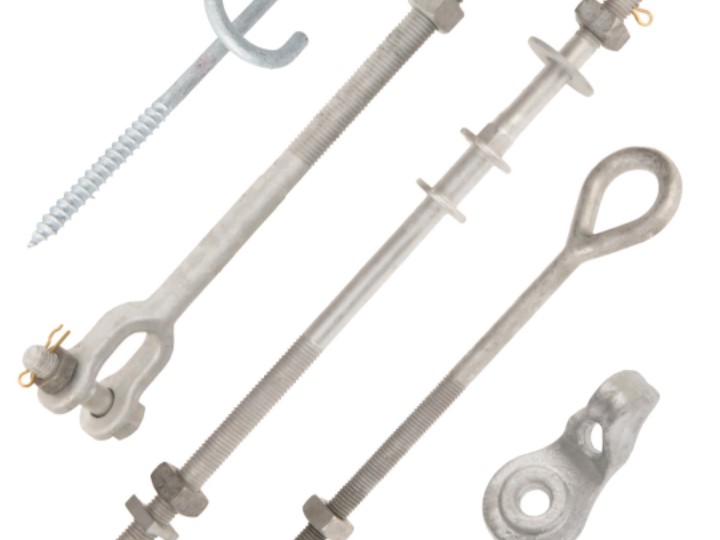
- Screws: Screws are versatile fasteners with threaded shafts and pointed tips. They are turned into materials to create their own threads, providing a secure hold. Common types include wood screws, machine screws, self-tapping screws, and sheet metal screws.
- Bolts: Bolts are similar to screws but have unthreaded shafts and require nuts for fastening. They are used when a removable connection is needed. Examples include hex bolts, carriage bolts, and anchor bolts.
- Nuts: Nuts are used in conjunction with bolts to secure materials together. They have internally threaded holes that match the thread of the bolt. Different types include hex nuts, wing nuts, and lock nuts.
- Washers: Washers are flat discs placed under the head or nut of a fastener to distribute the load, prevent damage to the material, and improve stability. There are various types, such as flat washers, lock washers, and spring washers.
- Rivets: Rivets are used to permanently fasten materials together by creating a mechanical joint. They consist of a solid shank and a head, and are often used in applications like aircraft assembly and construction.
- Anchors: Anchors are fasteners designed to provide stability in materials like concrete, masonry, or drywall. They can be expansion anchors, wedge anchors, or toggle anchors, depending on the application.
- Studs: Studs are threaded rods without heads. They are used to anchor components in place or serve as connection points for other fasteners.
- Sleeve Anchors: Sleeve anchors are versatile fasteners used for attaching objects to concrete or masonry. They expand as the nut is tightened, providing a secure grip.
- Threaded Rods: Threaded rods are long rods with threads along their entire length. They are used to create custom-length fasteners or as anchor rods in structural applications.
- U-Bolts: U-bolts are shaped like a “U” and have threads on both ends. They are used to secure pipes, tubes, and cables to surfaces.
- Eye Bolts: Eye bolts have a loop at one end for attaching hooks or other hardware. They are often used for hanging or lifting applications.
- Hanger Bolts: Hanger bolts have a wood screw thread on one end and a machine screw thread on the other. They are used to attach objects to wood or metal surfaces.
The Real Application for Steel Fasteners
Steel fasteners find application across various industries and scenarios due to their versatility, strength, and reliability. Some common applications of steel fasteners include:
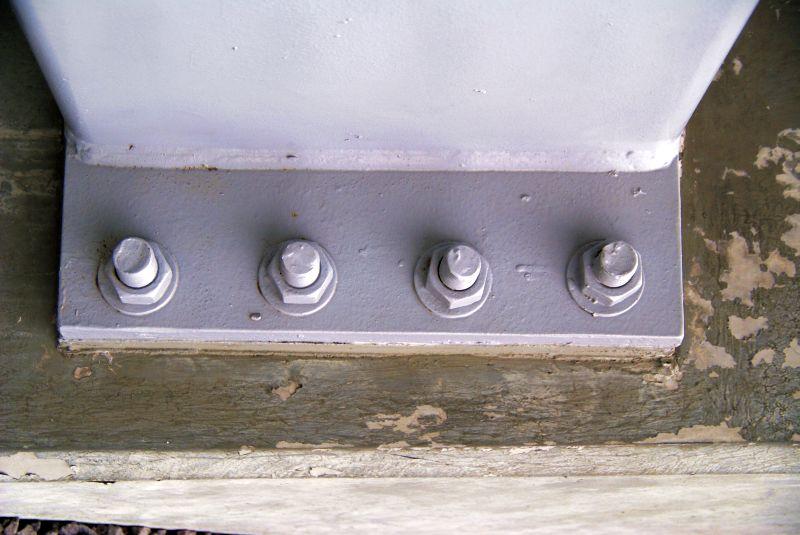
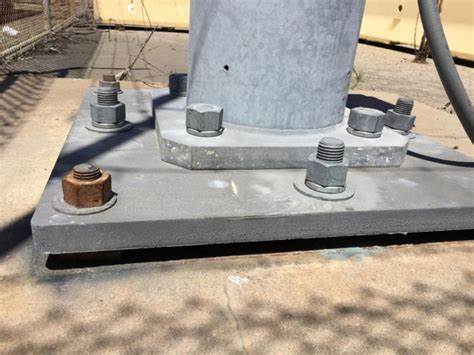
- Construction and Building: Steel fasteners play a crucial role in constructing buildings, bridges, roads, and other infrastructure. They are used to secure structural elements, connect beams and columns, and create stable joints in concrete and steel structures.
- Automotive Industry: Steel fasteners are used in the manufacturing and assembly of vehicles. They secure components such as body panels, chassis parts, engines, and interior fixtures.
- Aerospace and Aviation: In the aerospace sector, steel fasteners are employed to hold together aircraft components, ensuring safety and stability. They are used in everything from fuselage assembly to interior fixtures.
- Marine Industry: Steel fasteners are essential in maritime applications, as they need to resist the corrosive effects of saltwater. They secure ship components, offshore structures, and marine equipment.
- Furniture Manufacturing: In the furniture industry, steel fasteners are used to assemble various types of furniture, from chairs and tables to cabinets and shelves.
- Electronics: Steel fasteners secure components and enclosures in electronic devices, ensuring proper assembly and functionality.
- Home Improvement and DIY: Steel fasteners are used extensively in DIY projects, from hanging pictures and shelves to building outdoor structures like decks and fences.
- Industrial Machinery: Steel fasteners are used in the assembly of industrial machinery, ensuring the proper alignment and functioning of mechanical components.
- Oil and Gas Industry: In this industry, steel fasteners are used in various equipment and structures, including pipelines, platforms, and refineries.
- Medical Equipment: Steel fasteners are utilized in the manufacturing of medical devices and equipment, ensuring the safety and reliability of critical medical tools.
- Electrical Installations: Steel fasteners secure electrical components and panels in place, ensuring proper installation and safety in residential, commercial, and industrial settings.
- Renewable Energy: Steel fasteners are used in wind turbines, solar panel structures, and other renewable energy systems to secure components and ensure durability in outdoor environments.
- Rail and Transportation: Steel fasteners are used to connect rail tracks and secure components in trains, subways, and other transportation systems.
- Telecommunications: In the telecommunications industry, steel fasteners secure equipment in place, including cell towers, antennas, and communication infrastructure.
- Mining and Heavy Equipment: Steel fasteners are employed in the assembly of mining machinery and heavy equipment used in construction, excavation, and resource extraction.
These applications highlight the widespread importance of steel fasteners in various industries, contributing to the stability, safety, and functionality of structures and equipment.
The Installation of Steel Fasteners
The installation of steel fasteners requires precision and adherence to best practices to ensure a secure and reliable connection. Here are general guidelines for installing steel fasteners:
1.Gather the Necessary Tools and Materials:
- Steel fasteners (screws, bolts, nuts, etc.)
- Properly sized wrenches, screwdrivers, or socket sets
- Drill (if needed for pilot holes)
- Anchors (if required for masonry or drywall)
- Washers (if necessary for load distribution)
- Safety gear (gloves, safety glasses, ear protection)
2. Prepare the Work Area:
- Clear the area of debris, ensuring a clean and safe workspace.
- Mark the locations where fasteners need to be installed.
3. Choose the Right Fastener:
- Select the appropriate type, size, and material of steel fastener for your specific application.
4. Pilot Holes (if required):
- For wood or soft materials, drilling pilot holes slightly smaller than the fastener diameter can prevent splitting.
- Use a drill bit of the appropriate size.
5. Insert the Fastener:
- Insert the fastener into the pre-drilled hole or the material to be joined.
6. Tighten the Fastener:
- Use the appropriate tool (wrench, screwdriver, etc.) to turn the fastener clockwise (righty-tighty) to tighten it.
- Ensure the fastener is snug but not overtightened, as this can damage the material or the fastener.
7. Use Washers (if applicable):
- If using washers, place them under the head of the fastener or between the nut and the material to evenly distribute the load.
8. Torque to Specification (if applicable):
- In some applications, specific torque settings may be necessary for bolts. Use a torque wrench to achieve the recommended torque level.
9. Check Alignment:
- Ensure that the fasteners align properly with the materials being joined.
10. Test the Connection:
- Depending on the application, conduct load tests or inspections to ensure that the fasteners securely hold the materials together.
11. Trim Excess Length (if applicable):
- For bolts or threaded rods that protrude beyond the nut, use a hacksaw or grinder to cut off any excess length.
12. Secure Any Loose Ends:
- Apply threadlocker or locking nuts if vibration or movement may cause fasteners to loosen over time.
13. Safety Precautions:
- Always wear appropriate safety gear, especially when using power tools.
- Be cautious of sharp edges and hot surfaces.
- Follow any specific safety guidelines related to your application and workplace.
14. Documentation (if required):
- In some industries or applications, it may be necessary to document the installation process, including torque specifications and inspection results.
Properly installed steel fasteners ensure the safety, integrity, and longevity of structures and equipment. Be sure to consult the manufacturer’s guidelines and any industry-specific standards when installing fasteners for critical applications.
Selection of Steel Fasteners
Selecting the best fastener for a specific application is crucial to ensure a secure and reliable connection. Here are steps to help you choose the right fastener:
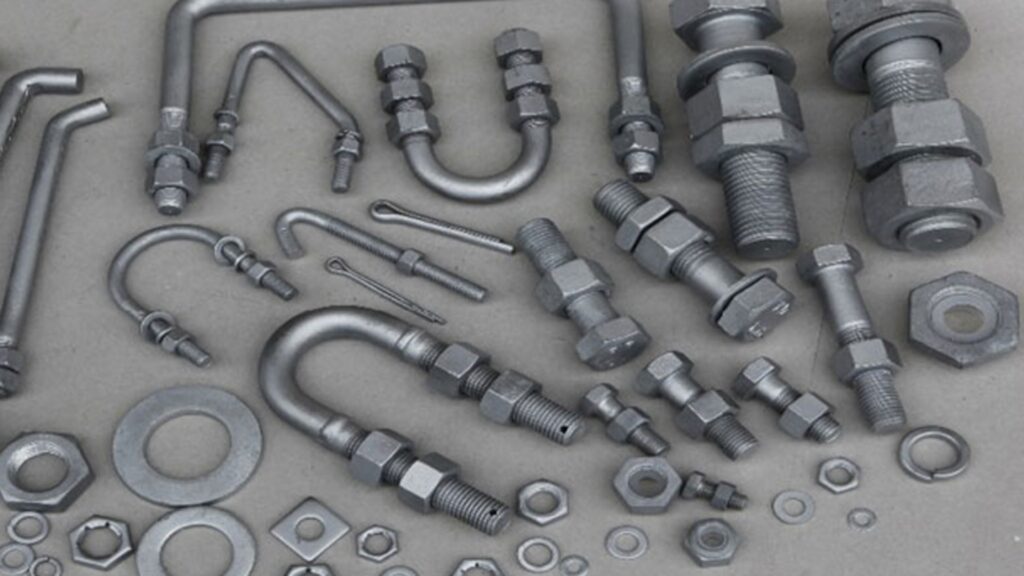
1. Understand the Application:
- Begin by thoroughly understanding the requirements of your project or application. Consider factors such as load-bearing capacity, environmental conditions, material compatibility, and the type of connection needed (permanent or removable).
2. Identify the Materials to Be Joined:
- Determine the materials you’ll be connecting. Common materials include wood, metal, concrete, plastic, or a combination of these. Material compatibility is critical for the fastener’s effectiveness.
3. Consider the Load and Stress Requirements:
- Calculate the load (tensile, shear, or compressive) that the fastener will need to support. Choose a fastener with the appropriate load-bearing capacity to meet or exceed these requirements.
4. Determine the Environmental Conditions:
- Consider the environment in which the fastener will be used. Factors like temperature fluctuations, humidity, exposure to chemicals, and the presence of corrosive agents will impact your choice of material. Stainless steel, for instance, is corrosion-resistant and suitable for outdoor applications.
5. Select the Type of Fastener:
- Choose the specific type of fastener based on your needs. Common options include screws, bolts, nuts, washers, anchors, rivets, and more. The choice depends on the application and materials.
6. Size and Thread Pitch:
- Determine the size and thread pitch (if applicable) of the fastener. These specifications must match the hole size and thread type in the materials being joined. Ensure that the length of the fastener is appropriate for the thickness of the materials.
7. Head Type:
- Consider the head type of the fastener. Common head types include hexagonal (hex head), flat head, round head, and more. The choice depends on whether you need the head to be flush or protruding.
8. Drive Type (for Screws):
- If you’re selecting screws, choose the appropriate drive type (e.g., Phillips, slotted, hex, Torx) based on your tools and the accessibility of the installation area.
9. Coatings and Finishes:
- Some fasteners come with coatings or finishes for added protection against corrosion. Choose coatings like zinc plating, galvanization, or other specialized coatings based on the application’s environmental conditions.
10. Consider Additional Features:
- Depending on your application, you may need additional features like self-drilling capabilities, self-tapping threads, or anti-corrosion coatings. These features can simplify installation and enhance performance.
11. Budget and Availability:
- Consider your budget and the availability of the fasteners you need. In some cases, specialty fasteners may be required, which can be more expensive and harder to find.
12. Consult with Experts:
- If you’re uncertain about the best fastener for your application, consult with experts in the field, such as engineers or experienced contractors. They can provide valuable guidance and recommendations.
- Our TTF Power Systems is an advanced power line hardware, utility fasteners expert and manufacturer. Our business operates from South America to Saudi Arabia as well as Africa.
13. Test if Necessary:
- If the application is critical or if you have unique requirements, consider testing different fasteners in a controlled environment to ensure they meet your expectations.
Remember that selecting the right fastener is essential for the safety, durability, and performance of your project or application. Taking the time to make an informed decision will pay off in the long run by preventing potential issues and ensuring a reliable connection.
FAQs
Steel fasteners are essential hardware components used to securely join or affix materials together.
Understand the Application
Identify the Materials to Be Joined
Consider the Load and Stress Requirements
Determine the Environmental Conditions
Select the Type of Fastener
Size and Thread Pitch
Head Type
Drive Type (for Screws)
Coatings and Finishes
Consider Additional Features
Budget and Availability
Consult with Experts
Test if Necessary
Gather the Necessary Tools and Materials
Prepare the Work Area
Choose the Right Fastener
Pilot Holes (if required)
Insert the Fastener
Tighten the Fastener
Use Washers (if applicable)
Torque to Specification (if applicable)
Check Alignment
Test the Connection
Trim Excess Length (if applicable)
Secure Any Loose Ends
Safety Precautions
Documentation (if required)

